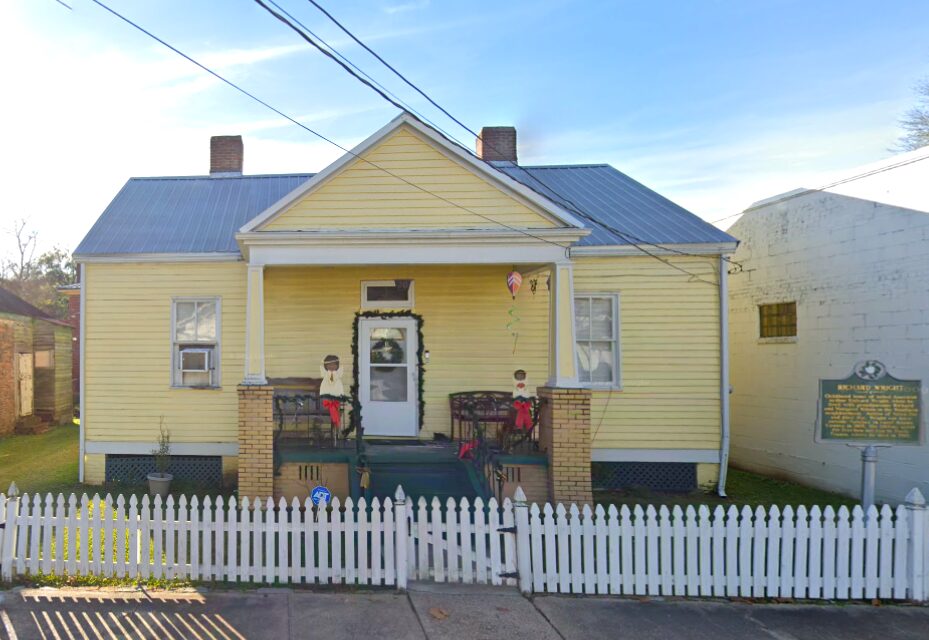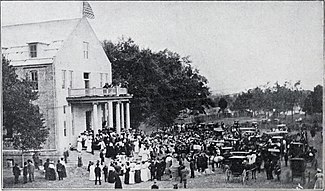Introduction
Tucked in northern Natchez, Mississippi lies the Woodlawn Historic District—a 97-acre, 360-contributing-building neighborhood that stands as a powerful emblem of African-American resilience, community development, and architectural heritage from Reconstruction through World War II. Recognized on the National Register of Historic Places in 1995, Woodlawn’s story spans emancipation, education, civil rights, and artistry—all woven into the very fabric of its streets.WikipediaLiving Places
A Post-War Subdivision of Promise
What once was the Woodlawn estate of the Beaumont family was subdivided in 1867 into building lots purchased by newly freed African-Americans. This subdivision, bounded by North Union Street, Bishop Street, Martin Luther King Jr. Road, and Woodlawn Street, marked a transformative shift—from plantation to neighborhood—signifying ownership, freedom, and communal growth.SAH ARCHIPEDIAWikipedia
Developers, along with agencies like the Freedmen’s Bureau and the Colored Building and Loan Association, facilitated land acquisition and home construction, sowing the seeds of a vibrant, self-sustained, and enduring African-American community.SAH ARCHIPEDIAubir.buffalo.edu

Most of the contributing buildings in the Woodlawn Historic District were built between about 1890 and 1940. The architectural styles represented in the Woodlawn Historic District are Italianate, Queen Anne, Colonial Revival, and Craftsman Bungalow. The Italianate style appears only as details on vernacular galleried cottages with side-gable or hipped roofs. These details include bracketed chamfered posts with dropped capitals and doorway and window surrounds that are shouldered and peaked. Three examples of vernacular houses with Italianate details are 19 Bishop Street, 21 Bishop Street, and 1 Garden Street.
The Queen Anne style appears as details on vernacular houses and as complete statements on Queen Anne house forms. The style appears only as details on vernacular galleried cottages and on shotgun houses, a house form that first appeared in the neighborhood during the Queen Anne period. These Queen Anne details include brackets, turned posts, and entrance doors with glazed upper panels. Examples of vernacular Queen Anne houses include 43 Beaumont Street, 18 and 20 Elm Street, 838 Martin Luther King Jr. Road, 11 Prentiss Street, and 914 North Union Street. The Queen Anne style is well represented in the Woodlawn Historic District by a large number of vernacular, L-shaped houses with cross-gable roofs or projecting wings with gabled roofs. Often these houses also feature gable ends with decorative shingles and louvered vents in addition to Queen Anne-style porch detailing and entrance doors with glazed upper panels. Examples include 24 Beaumont Street, 11 Claiborne Street, 14 Claiborne Street, and 1004 North Union Street. The most outstanding example of the Queen Anne style is located at 907 North Union Street. This small cottage exhibits a large number of stylistic details characteristic of the Queen Anne style and derives additional significance from its remarkable integrity.
Discover Woodlawn Historic District in Natchez, MS—a community born from Reconstruction, honoring African-American history, vernacular architecture, and literary legacy. Learn about Richard Wright’s roots and education milestones.

Stories Woven in Place
Several individuals and legacy sites lend poignant depth to the district:
- Richard Wright, famed author of Native Son and Black Boy, spent part of his childhood at his grandparents’ home at 20 Woodlawn Avenue. His experiences in this neighborhood shaped his literary vision.WikipediaSAH ARCHIPEDIAVisit Natchez
- A house belonging to Aaron Jackson, a former slave turned Union Army enlistee, still stands with descendants holding original documents like deeds and pension records.ubir.buffalo.edu
- Streets such as Lincoln, Grant, Parker, Bishop, Buckner, and Woodlawn preserve the neighborhood’s layered history—from honoring Union heroes to referencing original estates and institutions.SAH ARCHIPEDIALiving Places
Woodlawn’s Lasting Significance
Woodlawn Historic District is not only one of Natchez’s most important African-American neighborhoods; it’s among Mississippi’s richest repositories of vernacular architecture and cultural perseverance. The district’s integrity, throughout reconstruction, desegregation, and change, attests to the strength of community.ubir.buffalo.eduLiving Places
Its inclusion in the National Register in 1995 formalized recognition of both its architectural merit and its heartfelt historical narrative.Wikipedia



https://tc.ciechanow.pl
I love this site – its so usefull and helpfull.
https://tc.ciechanow.pl
ideal goksite
Hey! Do you use Twitter? I’d like to follow you if that
would be okay. I’m absolutely enjoying your
blog and look forward to new posts.
xxx
I love it when individuals get together and share views.
Great site, keep it up!
follow کردن لینک نظرات در وردپرس
Thanks for any other fantastic post. Where else may anybody get that kind of information in such an ideal approach of writing?
I’ve a presentation subsequent week, and I am on the
look for such information.
چگونه در گوگل مپ مکانی را ثبت کنیم؟
Asking questions are in fact fastidious thing if you are not understanding
anything totally, however this post offers nice understanding yet.
situs togel
Wonderful blog! I found it while searching on Yahoo News.
Do you have any suggestions on how to get listed in Yahoo News?
I’ve been trying for a while but I never seem to
get there! Appreciate it